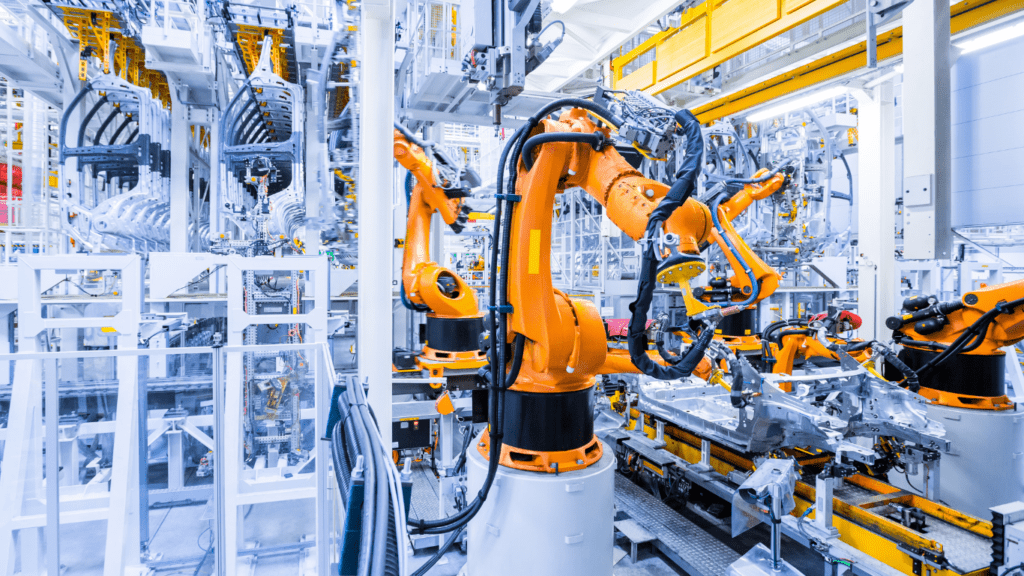Electric Vehicles Take Center Stage
Electric vehicles (EVs) dominate discussions around the future of the automotive industry. Several key factors drive this transformation.
Advances in Battery Technology
Battery technology has seen significant advancements, increasing EV efficiency and range. Companies now introduce solid-state batteries, promising higher energy density and quicker charging times. For instance, Toyota and QuantumScape are making notable strides in developing these next-gen batteries.
Expansion of Charging Infrastructure
The charging infrastructure rapidly expands, making EVs more accessible to the public. Governments and private firms invest heavily in constructing charging stations. By 2024, the U.S. expects to have over 100,000 public charging points, up from approximately 43,000 in 2021. Tesla, ChargePoint, and EVgo offer numerous locations, contributing to seamless long-distance travel for EV owners.
Autonomous Driving and AI Integration

Autonomous driving and AI integration are set to revolutionize the automotive industry in 2024. Advances in these technologies are creating smarter, safer vehicles that gradually reduce human intervention.
Levels of Autonomy
There are five levels of driving automation established by the Society of Automotive Engineers (SAE). Levels range from Level 0 (no automation) to Level 5 (full automation). Most modern cars feature Level 2 (partial automation), including systems like adaptive cruise control and lane-keeping assistance. In 2024, more vehicles are expected to have Level 3 capabilities, which allow conditional automated driving. For instance, Mercedes-Benz is rolling out Level 3 technology in its S-Class models, enabling hands-free driving in specific conditions.
Recent Developments in AI
Recent AI developments are significantly enhancing autonomous driving. AI algorithms process vast amounts of data from sensors, cameras, and radar systems in real-time. Tesla’s Full Self-Driving (FSD) software, for example, uses AI to navigate urban streets, recognize traffic signals, and make complex driving decisions. Similarly, Waymo’s AI technology allows its driverless cars to handle complex scenarios like left turns at busy intersections. By 2024, continuous improvements in machine learning and neural networks will further increase the reliability of autonomous systems.
Connectivity and IoT in Vehicles
Connectivity and the Internet of Things (IoT) are transforming the automotive landscape in 2024, creating smarter, more integrated vehicles. This section explores these impactful trends.
Enhanced Infotainment Systems
- Infotainment systems in modern vehicles are evolving rapidly, offering more than just multimedia playback.
- Advanced systems now integrate with smartphones seamlessly, allowing drivers and passengers to access navigation, music, and communication apps effortlessly.
- Apple’s CarPlay and Google’s Android Auto are becoming standards in most new vehicles, enhancing user experience with familiar interfaces.
- Vehicle manufacturers are incorporating voice assistants such as Amazon Alexa and Google Assistant, enabling hands-free control of various functions.
- These systems are also being integrated with real-time traffic data and over-the-air (OTA) updates, ensuring that drivers always have up-to-date information and features.
Vehicle-to-Everything (V2X) Communication
Vehicle-to-Everything (V2X) communication technology is set to revolutionize how vehicles interact with their surroundings. This technology allows cars to communicate with each other (V2V), infrastructure (V2I), pedestrians (V2P), and networks (V2N). For instance, V2V communication enables vehicles to share information about speed, position, and road conditions, significantly enhancing safety by reducing the likelihood of collisions. V2I communication can improve traffic management by connecting vehicles with traffic lights, road signs, and other infrastructure, optimizing traffic flow and reducing congestion. Moreover, V2P communication alerts drivers to nearby pedestrians, enhancing safety in urban areas. With 5G networks facilitating faster and more reliable data exchange, V2X communication technologies are poised to become integral components of next-generation vehicles, contributing to smarter and safer roads.
Sustainability and Green Initiatives
The automotive industry in 2024 isn’t just about electric vehicles and autonomous technology. Sustainability and green initiatives are taking center stage, transforming how cars are manufactured and the materials used.
Eco-Friendly Manufacturing Processes
Automakers are adopting eco-friendly manufacturing processes. For instance, Ford’s Dearborn Truck Plant has been using renewable energy and waste reduction techniques. By 2024, I expect more manufacturers to follow suit, implementing zero-emission production lines and reducing their carbon footprints. BMW’s i-Series cars showcase another example, relying heavily on wind power to manufacture key components. These practices not only benefit the environment but also appeal to eco-conscious consumers.
Recyclable and Sustainable Materials
Recyclable and sustainable materials are increasingly used in vehicle production. Companies like Tesla and Volvo are using:
- recycled plastics
- eco-friendly textiles
- biodegradable materials
Tesla’s Model 3 interior uses synthetic leather while Volvo’s XC40 features carpets made from recycled plastic bottles. Automakers aim for closed-loop systems where materials can be reused, reducing waste and resource depletion. Initiatives like these demonstrate the industry’s shift towards sustainability and resource efficiency, catering to growing consumer demand for eco-friendly products.
Shared Mobility and Fleet Management
Shared mobility and fleet management are transforming the automotive landscape in 2024.
Rise of Ride-Sharing Services
Ride-sharing services like Uber and Lyft are expanding rapidly. By leveraging technology, these companies are making transportation more accessible and affordable. In urban areas, many individuals are choosing ride-sharing over vehicle ownership. This trend is reducing the number of privately owned vehicles on the road, alleviating traffic congestion, and decreasing pollution. Autonomous vehicles are expected to play a significant role in ride-sharing by 2024. Companies like Cruise and Waymo are testing self-driving ride-sharing fleets, which could further enhance efficiency and reduce operational costs.
Fleet Management Solutions
Fleet management solutions are becoming more sophisticated. Advanced telematics systems now provide real-time data on vehicle location, fuel usage, and driver behavior. This data helps companies optimize their fleets and reduce costs. Predictive maintenance, enabled by IoT sensors, is becoming standard. These sensors detect potential issues before they escalate, minimizing downtime and maintenance expenses. Electric fleet vehicles are also gaining traction. Companies like Amazon and FedEx are investing heavily in electric delivery vans. These vehicles lower operational costs and support sustainability goals by reducing emissions.




